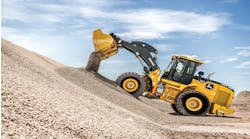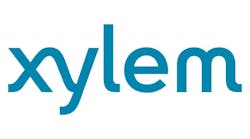It's amazing the difference a year or two will make. In 2009, I was fielding calls regarding downsizing; laying off employees, selling fleet, closing facilities. Surprisingly, just a few years later in the February 2012 edition of RER Magazine, industry consultant Frank Manfredi says the construction equipment rental market in 2011 expanded by 17 percent and that we can expect 2012 to expand by an additional 12 percent.
From our own clients, we are hearing similar stories of growth as demand and rental rates increase. Now, two of the most common questions I am getting are: Is it time to open a new location and is now a good time to sell my business? Let's take a look at how to go about that analysis.
Should your Company Expand?
The very first thing to consider is, do you have your current house in order? You have to have a firm foundation before you “add-on.” A new location will inevitably require additional capital and divert management and ownership attention from current operations. The following are some of the hard questions you should ask yourself:
1. Do you have a good management reporting system that delivers key operational data in a timely and concise format?
2. Are your current operations meeting their goals (revenues, cash flows, payroll, repairs and maintenance, equipment utilization)? Here are some of the broad guidelines of current minimal performance levels I would like to see before a company looks to expand:
-
Rental revenues are increasing (preferably at least 10 percent over the prior year)
-
Total payroll no more than 25 percent of total revenues
-
Dollar utilization of rental fleet of at least 50 percent
-
Average fleet age no more than four to five years (no deferred investment needed)
-
EBITDA (Earnings Before Interest, Taxes, Depreciation, and Amortization) of at least 30 percent of total revenue
-
Positive Working Capital Ratio of 150 percent (cash + accounts receivable divided by accounts payable + accrued expenses)
-
Debt no more than 75 percent of the Orderly Liquidation Value (usually above auction value but below full retail value) of your rental assets
-
EBITDA equal to 150 percent of your debt service requirements (note payments of fully amortizing principal and interest)
3. Do you have depth in your management team to assure that as your attention is diverted to your new operation, the existing operations will continue to perform at a high level? Perhaps you even have enough depth in management to promote your new branch manger from within.
4. Do you have the cash and credit lines in place to fund the expansion? Is your current debt level well below of the liquidation value of your rental assets? Do you have a strong positive working capital (cash and accounts receivable less accounts payable and accrued expenses)? Do you have the support and commitment of lenders to fund the expansion, both in terms of equipment and infrastructure (real estate, leasehold improvements, trucks, etc.) as well as to potentially fund the location's payroll and operating expenses?
If you can't comfortably and confidently answer, “Yes” to most if not all of these questions, you should probably go no farther. Possibly the best thing you could do for your company is to put the energy, attention and capital into your current operation to achieve these benchmarks.
Acquisition vs. Cold Start
Some of the best multi-location rental companies I have seen around the industry grew through a combination of acquisitions and cold start, not relying exclusively on either method. There are some pros and cons to each:
Acquisitions: Acquiring an existing rental company can give you the employees, facility, customer base and rental fleet to get going in a new market immediately. Acquisitions tend to be opportunistic. From 2008 through 2010, there was very little acquisition activity within the industry. Many sellers that wanted out of their business during that time period have had to hang on to their business, many barely surviving through the bad times. Now that things have turned around, they are once again looking to sell their business. Some acquisitions can be “fixer-uppers” that need revitalization of fleet, facilities and staff. Many times, these types of businesses can be acquired at or near their asset value and can be turned around quickly. Other acquisitions can be thriving “ready to go” businesses with excellent fleet, facilities, customers and staff that can be quickly integrated into your operations. Obviously, healthy businesses will command a premium (i.e. “blue sky”/goodwill) over and above their asset value.
Cold starts: Starting from scratch often causes some challenges. Zoning restrictions, real estate and refurbishing costs can create barriers to entry. (Note: I recently wrote in my blog about potential real estate opportunities that may be created by consolidation of facilities in connection with the RSC/United merger). Most cold starts take a minimum of six months and more often, 12 months or more to reach profitability. Often, demand can be established by sending a salesman out into the new territory prior to opening the location. A couple of rules of thumb on cold starts:
-
The best cold starts are located no closer than 30 miles from existing locations and no more than 100 miles from existing locations. Closer than 30 miles can result in “cannibalizing” revenues from an existing store and more than 100 miles reduces your ability to cost effectively share equipment, employees and management.
-
Never, never open a rental store in an area that will not support a minimum of $1 million in annual rental revenue. Most rental stores do not achieve the “critical mass” level for ultimate profitability and cash flow until they reach at least $750,000 in annual rental revenue. Once you reach that $750,000 in annual rental revenue and your fixed costs are covered, incremental revenues over that mark tend to generate EBITDA margins of 60 percent or more. If you are not achieving $1 million or more in rental revenue within the first 18 to 24 months, you should consider closing the location. If you are leasing a facility for a cold start, often the best arrangement is to negotiate an initial rental term of no more than 24 months with additional options to renew.
Continue to Page 2
Potential Benefits of Another Location
The potential benefits of a new location include making your company more attractive as a future acquisition candidate and increasing the overall valuation of your business. It will most likely create synergies in your company: the sharing of overhead and computer systems, creating new customers, better servicing of current customers and reduced delivery costs. Another upside is sharing equipment; you could raise your dollar utilization up to five points as the same equipment is being rented out with increased time utilization. (Note: I do not subscribe to the theory that the best way to put under-utilized equipment to work is by opening a new location; the new location should be justified as mentioned above.)
A new location in the right market place, relative to your current facilities, could break glass ceilings of current market limitations (i.e. you got about all the business you can get from your current location). Profitable expansion creates opportunities for your company, your customers and your employees. Increased rental revenues will inevitably increase EBITDA and the overall value of your company. Increasing the value of your business is a positive, no matter if your goal is to pass the business down to the next generation or if your goal is to build an exit strategy for the future.
Is it time to sell your company?
The other question I hear a lot lately is whether or not it is the time to sell. Many rental stores are seeing positive growth and are becoming prosperous again; many of those rental store owners are looking to find an exit strategy in the next few years due to personal or professional goals. Maybe it is time to look at retirement, concentrate on family or even another business endeavor. Some companies may see growth opportunities, but may be reluctant to put additional capital at risk. If you are unwilling to act on these growth opportunities, it may be time to look at a sale. There is no “maintaining” in the current economy; either you are proactively managing and growing your business or you are losing ground.
I was a participant as a buyer for major national companies in the late 1990s; we are not seeing those types of “frenzy” numbers being paid for acquisitions, but the market is the best I have seen for sellers since the mid 2000s. Especially since 2011, we have seen more and more acquisition activity in the construction equipment rental industry, with several large players looking to expand.
In order to determine if now is the right time for you to sell your business, you should ask yourself some of the same questions as mentioned above. Acquirers are looking for good, solid companies that are able to sustain themselves without significant investment of time or money from the new company. They are looking for some of the same minimal performance factors as an expanding company should meet:
-
Increasing rental revenues
-
Total payroll no more than 25 percent of total revenues
-
Dollar utilization of rental fleet of at least 50 percent
-
Average fleet age no more than four to five years
-
EBITDA of at least 30-40 percent of total revenue
-
Solid and proven management and sales teams
-
Strategically located, well maintained and environmentally compliant facilities
Whether or not you are looking to expand or sell your rental company, you must keep your own house in order. Like I have said over and over in the past, you must always strive to work on your rental store and not just in it; you must continue to move forward and make improvements to increase market share and profitability.
Continue to build on your daily metrics and reporting, keeping track of current progress and making necessary tweaks and improvements. Work on increasing rental rates and the dollar utilization of your rental fleet. By all accounts, the rental industry is on a positive track again; be sure you have positioned your company to take advantage.
Gary Stansberry is principal of The Stansberry Firm LLC and specializes in business sales, fair market business valuations, operational consulting and positioning businesses to increase their value. More information on the company can be found at www.thestansberryfirm.com. Gary can be reached at (817) 579-7368 or by email at [email protected].






